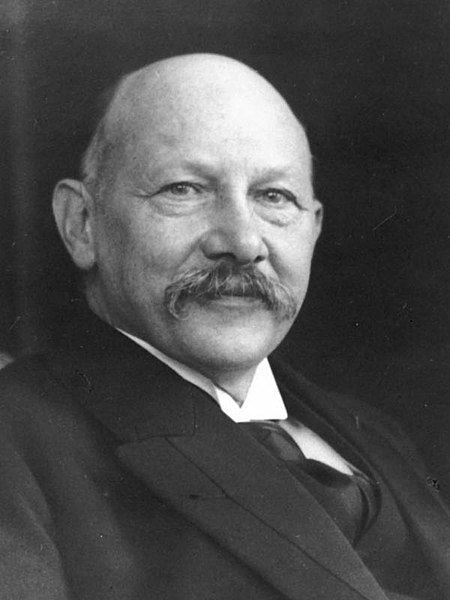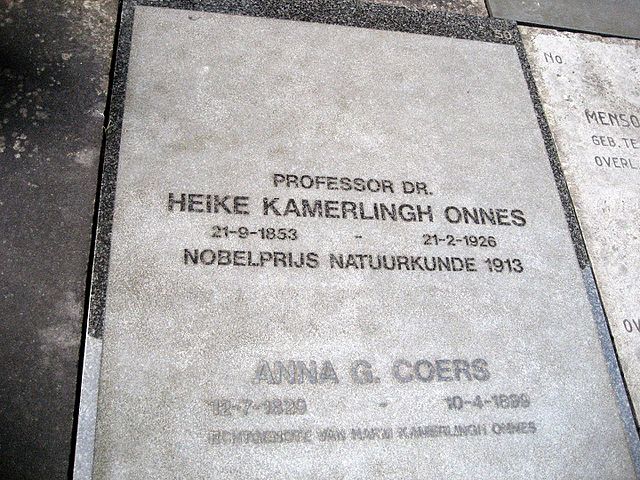Heike Kamerlingh Onnes was a Dutch physicist and Nobel laureate. He exploited the Hampson–Linde cycle to investigate how materials behave when cooled to nearly absolute zero and later to liquefy helium for the first time, in 1908. He also discovered superconductivity in 1911.
Kamerlingh Onnes in 1913
Commemorative plaque in Leiden
Grave of Kamerlingh Onnes in Voorschoten
Absolute zero is the lowest limit of the thermodynamic temperature scale; a state at which the enthalpy and entropy of a cooled ideal gas reach their minimum value, taken as zero kelvin. The fundamental particles of nature have minimum vibrational motion, retaining only quantum mechanical, zero-point energy-induced particle motion. The theoretical temperature is determined by extrapolating the ideal gas law; by international agreement, absolute zero is taken as −273.15 degrees on the Celsius scale, which equals −459.67 degrees on the Fahrenheit scale. The corresponding Kelvin and Rankine temperature scales set their zero points at absolute zero by definition.
Robert Boyle pioneered the idea of an absolute zero.
Commemorative plaque in Leiden
The rapid expansion of gases leaving the Boomerang Nebula, a bi-polar, filamentary, likely proto-planetary nebula in Centaurus, has a temperature of 1 K, the lowest observed outside of a laboratory.





